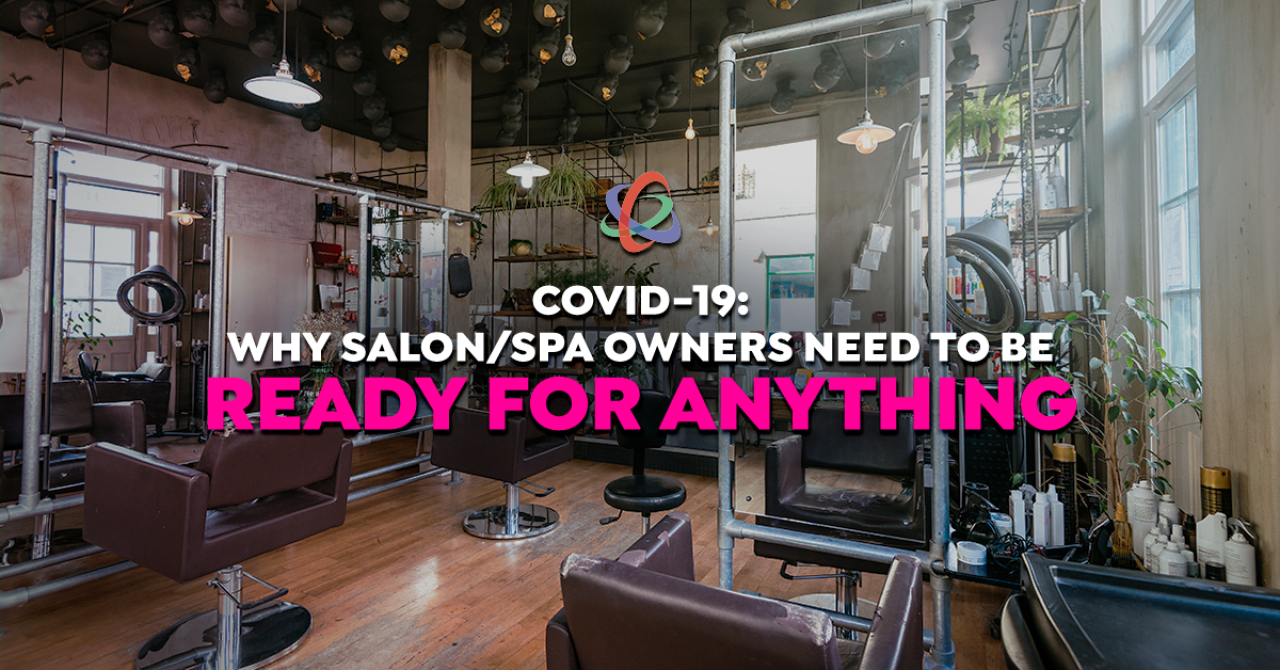COVID-19: Why Salon/Spa Owners Need to be Ready for Anything

But by the end of March, most salons/spas were shut down, and the only thing that you and every other owner wanted to know was...
"When can I reopen my salon/spa?"
It was as if reopening signaled that the worst was over.
Here we are now in mid-July, and most salons and spas are open. (A few in Northern California should be open by the end of July.)
But unfortunately, infection rates are surging.
So the scary question lurking in the back of everyone’s mind is, will another shutdown happen?
No one has the answer to that question, but it does raise concerns that every salon/spa owner must consider.
If this pandemic taught us anything, it’s that the more prepared your business is, the better its chances of surviving a crisis — up to and including another shutdown.
To ensure your salon/spa can survive whatever challenges COVID-19 can throw in its way, consider the following “what if’s”:
- If the infection surge continues: Fear is not good for salons and spas. Many are already reporting an increase in cancellations and no-shows. Why? Because the profound increase in infection rates also spreads fear. KEY: Salons and spas have done an extraordinary job communicating safety protocols to help clients feel safe. The best way to counteract fear is through ongoing communication with clients detailing just how extensive your protocols are to ensure a safe environment to receive services. How much communication? Every day the news is filled with details about COVID-19 spreading. If you feature one safety protocol or measure each day in a social media post, you’ll help clients trust that your business is safe.
- If an employee tests positive: The massive scale and speed of this surge means it’s easier for employees to get infected. If an employee does test positive, it is imperative to follow CDC, state and local guidelines. KEY #1: Have a plan in place should an employee test positive. All employees need to get tested. You should close your business while awaiting test results. It sucks, but it’s the right thing to do. KEY #2: Educate your employees about managing their behaviors and social choices to avoid infection.
- If an employee travels out-of-state: You can’t prevent an employee from traveling out-of-state and to a possible Covid hotspot. But, you can set the rules for returning to work. KEY: It is the owner’s responsibility to protect your employees and clients from possible infection. Make a 14-day self-quarantine mandatory for any employee that travels out-of-state. This means that employees cannot return to work for 14 days after returning from out-of-state travel. This way, it’s the employee’s choice to travel or not. No, self-quarantine is not compensated time off.
- If capacity restrictions continue: You cannot continue to pay 100% of your operating expenses running at 50% capacity. In essence, operating at reduced capacity is forced downsizing. Also, with COVID-19 surging, states are pushing back phased reopening plans. This means the likelihood of getting back to 100% operating capacity is not going to happen anytime soon. Chances are, your PPP funds are gone, or nearly gone. If you received an EIDL loan, you’re operating partially on borrowed money. KEY: If there is one massive point we’ve been driving home during this crisis, it’s the importance of having a cash-flow plan to guide your financial decision making. Using a spreadsheet, start with how much cash you have and your projected monthly revenues for the next 12 months. Revenues are a “best guess.” Then enter every monthly expense, including payroll. If net cash continues to shrink each month, that means you have tough spending decisions to make. You cannot leave the fate of your company to chance. Related: If you need help building your cash-flow plan, we can help. Click here to learn more.
- If there’s no more PPP and EIDL funding: The likelihood of another federal bailout program for small businesses like PPP and EIDL is extremely unlikely. If bailout loans do happen, great. You just can’t count on it happening. KEY: Surviving this pandemic means having enough cash flow to make it through. Again, this is why you must have a working cash-flow plan to guide your financial decisions. Avoid credit card debt at all costs. Avoid credit card receipt financing at all cost.
- PPP loan deadline extended: If you did not get a PPP loan, the deadline to apply has been extended to August 8th. There is still $130 billion available for PPP loans.
- If there’s another shutdown: The economy cannot handle another shutdown. Small business owners definitely can’t handle another shutdown. With the election just months away, the last thing president Trump wants to hear is that one or more states are shutting down again. Although possible, it is unlikely there will be another shutdown of the economy. The dramatic surge that’s happening right now is due to people ignoring common sense safety practices like wearing a mask and social distancing. KEY: Wearing a mask and social distancing is a small price to pay to prevent the devastation of another shutdown.
Here’s my challenge to you: This crisis is far from over. Don’t get comfortable. Don’t assume everything will turn out fine. Businesses do not survive on luck. Besides, hope is never a good strategy.
This doesn’t mean staring at the heavens looking for that other COVID-19 shoe to drop.
It means there are more unknowns ahead of all of us. Being prepared means having your contingency plans ready to go.


Comments
No comments found. Start the conversation!
Leave a Comment